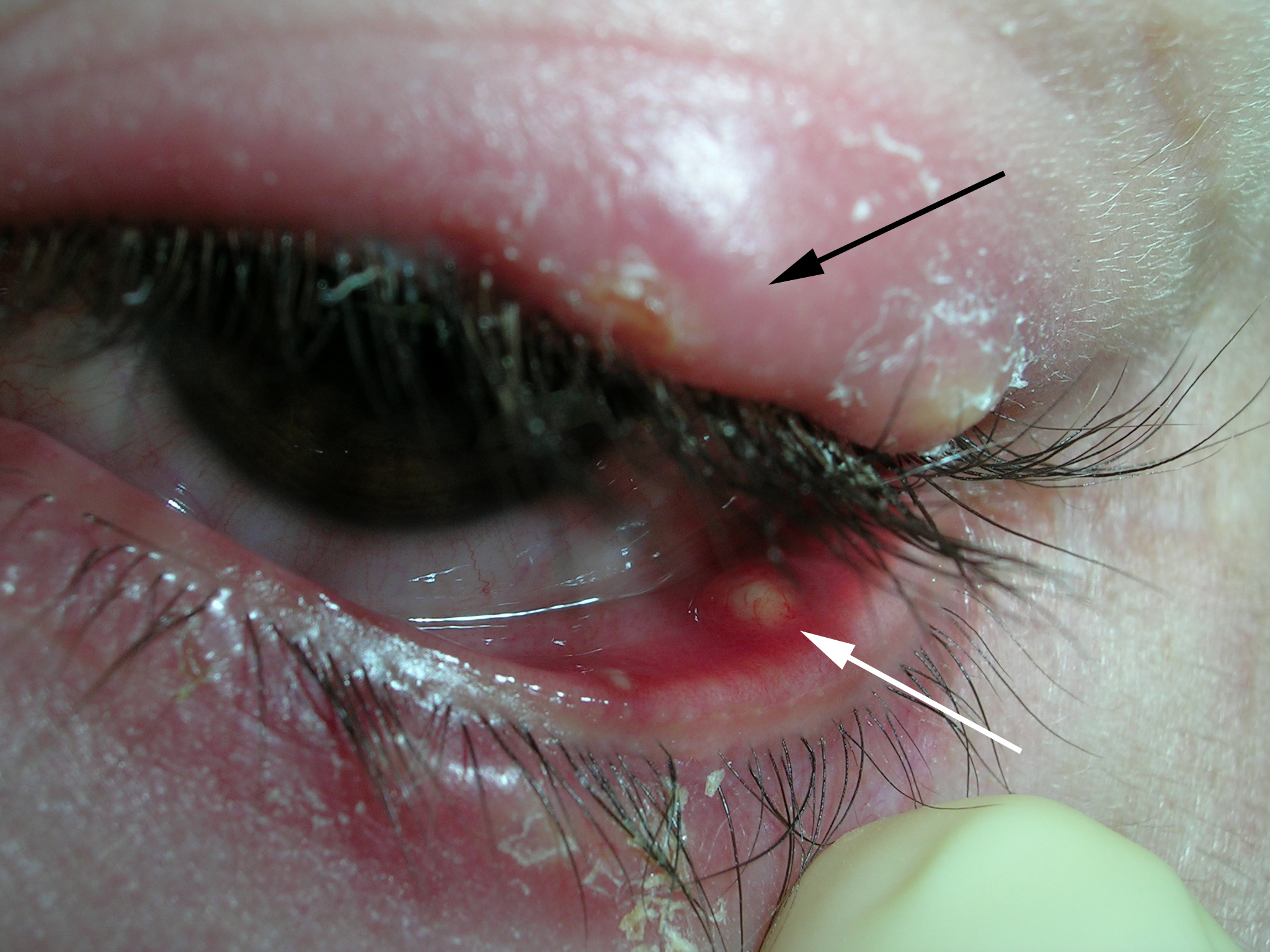The upper eyelid lesion was an external hordeolum (stye) and the lower eyelid lesion was an internal hordeolum. An external hordeolum is an infection in the Zeiss or Moll’s glands of the external eyelids. Staphylococcus aureus is the causative agent in most cases. An internal hordeolum is an infection in the meibomian glands that may become a chalazion as the infection resolves. Chalazia occur when meibomian glands become blocked, often by blepharitis. A blocked meibomian gland duct releases gland contents into the eyelid soft tissue. Gland contents cause a lipogranulomatous reaction. The reaction can cause acute tenderness and erythema, then evolves into a chronic nodule. The chronic chalazion is often nontender or less tender.
The physician made the diagnosis of acute hordeola and discussed the risks and benefits of an incision and drainage of the upper external hordeolum. The patient decided to have this done because his eye pain and swelling were causing him much distress. A small amount of 1% lidocaine with epinephrine was injected into the external hordeolum using a 30-gauge needle, and the small abscess was drained with a #11 scalpel.
The physician talked to the patient about the need for oral antibiotics because of the prominent swelling of both eyelids, the conjunctivitis, and the purulent discharge. The physician prescribed a 1-week course of oral cephalexin 500 mg tid, and directed the patient to do warm soaks for 15 minutes, 3 to 4 times a day.
At follow-up 2 days later, the patient was already much improved in symptoms and appearance. Both hordeola resolved completely in 2 weeks. If the internal hordeolum had evolved into a chalazion, the physician would have advised the patient to continue the warm soaks and referred him to an ophthalmologist if the chalazion did not resolve in a few months.
Photos and text for Photo Rounds Friday courtesy of Richard P. Usatine, MD. This case was adapted from: Chumley H. Hordeolum and chalazion. In: Usatine R, Smith M, Mayeaux EJ, Chumley H, Tysinger J, eds. The Color Atlas of Family Medicine. New York, NY: McGraw-Hill; 2009:72-74.
To learn more about The Color Atlas of Family Medicine, see:
* http://www.amazon.com/Color-Atlas-Family-Medicine/dp/0071474641


